CE MARK
Here you can find all the information about CE marking according to EU law for personal safety and a safe working environment.
By affixing the CE mark, the manufacturer confirms that the product complies with the product-specific European directives. A CE mark does not allow any conclusions whether the product was inspected by independent bodies for compliance with the guidelines. If a four-digit number is applied according to the CE marking, this indicates the involvement of a notified body in the conformity assessment procedure. The CE mark is no seal of quality (quality mark).

High visible clothing / Reflective clothing
This norm defines the requirements for high visible clothing. Its purpose is to ensure that the wearer of this garment is conspicuously visible in high-risk situations at all lighting conditions.
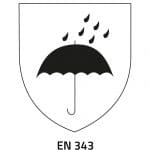
Protective wear against rain
The European Standard clarifies the requirements for protective clothing against bad weather. The tested parameters of this norm are the water permeability (watertightness) and the water vapour permeability (breathability).
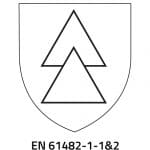
Protective wear against the risk of an electric arc
Protective wear certified according to EN 61482-1-2 protects the wearer against thermic hazards of an electric arc fault.
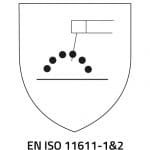
Protectivewear for welding & related processes
Protective wear certified according to EN ISO 11611 protects the wearer against small splashes of molten metal and short contact with flames. This clothing can be used for welding and similar activities.
Class 1 - Protects against less dangerous welding procedures and situations where there is less splashing and radiant heat
Class 2 - Protects against more dangerous welding procedures and situations involving a higher risk of splashing and radiant heat

Protective wear against heat & flames
Protective wear certified according to EN ISO 11612 protects the wearer from small splashes of molten metal and short contact with heat and flames. Heat can be generated by convection-, radiant heat, molten metal or a combination of these
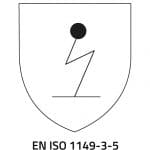
Protective wear electrostatic characteristics
Persons wearing electrostatic dissipative protective wear must be properly grounded. The resistance between the carrier and the earth must be below 10 (108 Ω)8 Ω, e.g. by wearing suitable shoes.
In flammable or explosive atmospheres, electrostatic dissipative protective wear should not be opened or removed as long as flammable or explosive substances are handled.

Protective wear against liquid chemicals
Please wear the garments together with other clothing in order to ensure protection in accordance with EN 13034. A chemical protective suit (type 6) must cover and protect at least the body and extremities, eg. whole-body suit or two-piece suits, with or without hood, boot covers or shoe covers.
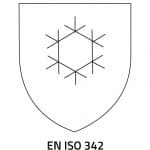
Protective wear against cold
Clothing certified according to EN 342 protects the wearer in cold environments. Cold environments are characterized by a combination of moisture and wind at air temperatures of less than -5 ° C. Before use, please make sure that the zippers close properly, that the arm and leg cuffs fit snugly on the body and that the clothes are snug at the waist. The clothing protects at cold weather. However, this is no guarantee that it will provide protection in all cases and under all conditions. Please note that protection may be impaired, if the clothing or the wearer is exposed to moisture. Store the garments in a dry and well-ventilated area with a consistent level of protection.
